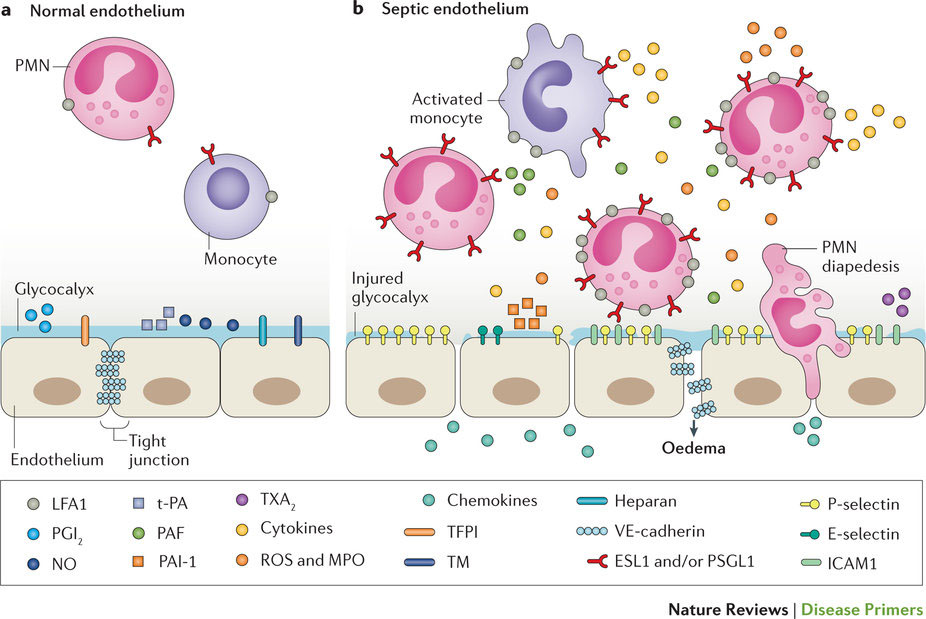Review Abstract
敗血症と敗血症性ショック
Sepsis and septic shock
2016年6月30日 Nature Reviews Disease Primers Article number: 16045 (2016) doi: 10.1038/nrdp.2016.45

敗血症の定義は20年以上もの間、微生物感染によって発症した発熱(または低体温)、頻脈、頻呼吸および白血球像の変化とされていた。現在、敗血症は、微生物の侵入に対する全身性炎症と免疫反応の調節不全と考えるようになってきている。敗血症によって臓器障害が生じるが、死亡率は15–25%に低下している。一方、敗血症性ショックの定義は、敗血症の中で高乳酸血症と低血圧を合併する状態と定義されており、院内死亡率が30–50%に達している。早期認識および最善治療へのコンプライアンスの向上によって、敗血症は直ちに生命を脅かす疾患ではなくなり、長期慢性重症疾患として見られている。多くの場合、敗血症は、長期の炎症、免疫抑制、臓器障害および除脂肪組織の減少と関連している。さらに、敗血症から回復しても、患者は長期の認知障害および機能障害をはじめ、退院後の死亡リスクも抱えることになる。早期認識に加えて最善治療の実施が強化されたことで院内死亡率は低下したが、免疫修飾薬の治療効果は今のところ十分とはいえない。同様に、敗血症の確定診断あるいは臨床転帰予測に使用できるバイオマーカーも存在しない。その複雑性から、今後も敗血症の転帰の改善は、進展するも遅々とした状態が続くと考えられる。
PrimeView
このPrimeViewでは、敗血症患者の3つの主要な管理法(感染症の管理、血液動態の安定化および敗血症反応の修飾)について取りまとめる。
本Primerの図解サマリー
For more than two decades, sepsis was defined as a microbial infection that produces fever (or hypothermia), tachycardia, tachypnoea and blood leukocyte changes. Sepsis is now increasingly being considered a dysregulated systemic inflammatory and immune response to microbial invasion that produces organ injury for which mortality rates are declining to 15–25%. Septic shock remains defined as sepsis with hyperlactataemia and concurrent hypotension requiring vasopressor therapy, with in-hospital mortality rates approaching 30–50%. With earlier recognition and more compliance to best practices, sepsis has become less of an immediate life-threatening disorder and more of a long-term chronic critical illness, often associated with prolonged inflammation, immune suppression, organ injury and lean tissue wasting. Furthermore, patients who survive sepsis have continuing risk of mortality after discharge, as well as long-term cognitive and functional deficits. Earlier recognition and improved implementation of best practices have reduced in-hospital mortality, but results from the use of immunomodulatory agents to date have been disappointing. Similarly, no biomarker can definitely diagnose sepsis or predict its clinical outcome. Because of its complexity, improvements in sepsis outcomes are likely to continue to be slow and incremental.

